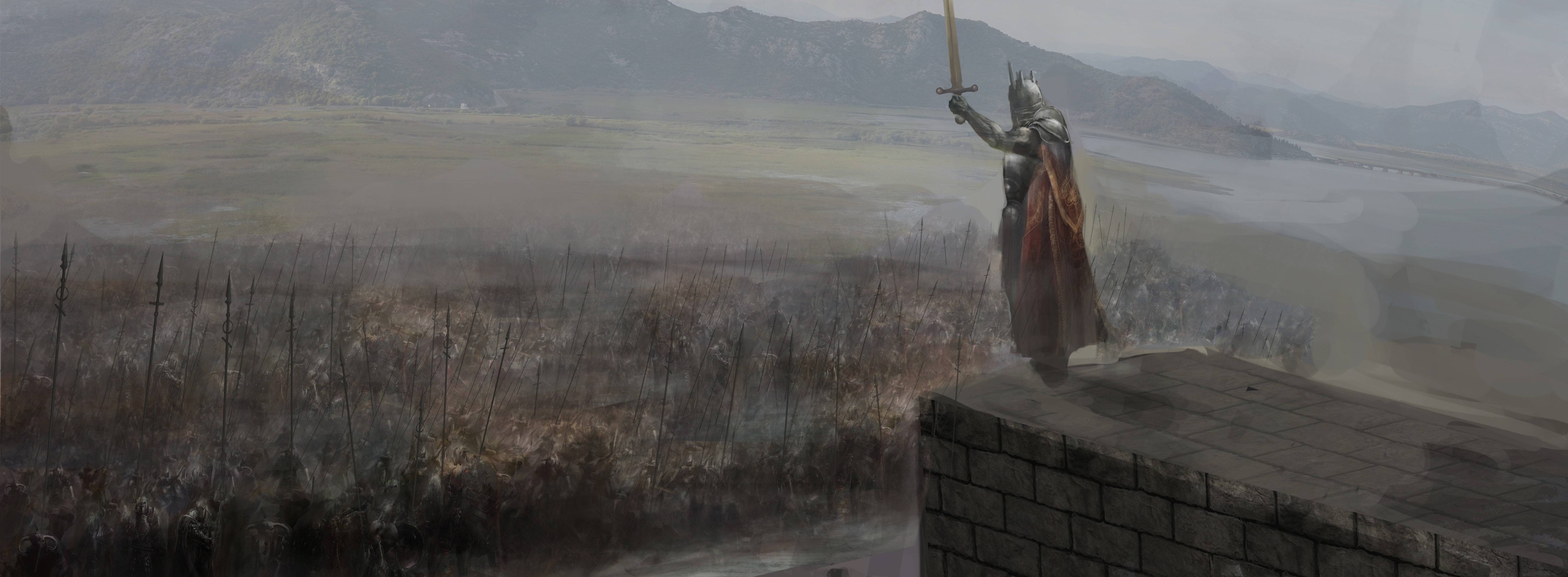The Kallenstone
The legends say that when Kallen finally ended his pilgrimage by climbing the Cragoran Mountains and saw the faces of the Divines, he immediately dropped to his knees upon their departure and etched their likenesses into a slab of limestone that lie at his feet. The drawing was crude at best, but is the first and only eye-witness account of the appearance of the divines themselves, and from this all other effigies are based.
And to his knees he fell, and he took up a shard of flint. With this he scratched at the stone as if a man possessed - for surely he was - and he gave to the world the first image of the divines. From The Book of the Seven-Fold Truth, Kallen's Pilgrimage, VII:IX
This slab was later cut from the mountaintop for fear it would be lost to the ages and moved to the town of Kallen's Rest, where it resided within the rudimentary shrine that had been erected there. Kallen's Stone was for a long time part of the pilgrimage, but eventually it was moved to the city of Brisburgh where it could be protected within the archives of the Central Temple. This legendary piece of artwork, now known commonly as The Kallenstone, has not been viewed by anybody outside of the Temple of the Divines for nearly three hundred years.
The Reclamation Movement
There has been a movement growing over the last fifty years of vocal malcontents who wish the Temple to unveil the secrets hidden in their archives. The Kallenstone is a central theme to the argument, but is one of thousands of relics and documents hidden away deep under the streets of Brisburgh. Still, The Kallenstone serves as a banner for the movement as it is considered to be a key piece of the history of the faith and is the last physical remnant left by Kallen himself.
Remove these ads. Join the Worldbuilders Guild









Comments